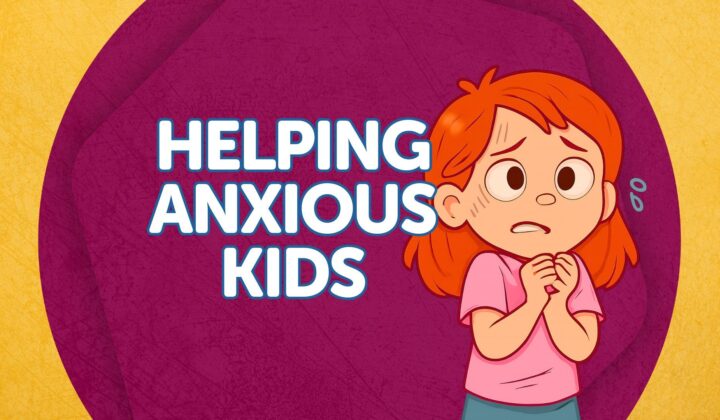Learn more about the journey that led to us equipping kids to carefully evaluate every idea they encounter.
Meet members of our team who have contributed to curriculum development.
Hear from real users of the Foundation Curriculum.
Learn what we believe about God, Jesus, Scripture, and more.
When is a Lego® not a Lego®?
How can we help prepare our kids to understand what is true before they are confronted with what is false?
From the webinar Combating Cultural Lies about Gender and Sexuality. Click here to see the video!
Elizabeth Urbanowicz
I spent the first decade of my professional career as an elementary educator at a Christian school in the suburbs of Chicago. I saw how helpful recess was for students, but the Chicago weather was often too cold for students to go outside. So, I started buying toys and games for my students to play with during inside recess. I decided to purchase some Legos® because eight and nine-year-olds just love Legos®. The problem was that my classroom budget for the year was about $500, and Legos® are expensive.
So I did a little research on Amazon and found out I could get over 2,000 knockoff, non-Lego® Lego® bricks for under $50. When the bricks arrived, I told my students how excited I was that we had some Legos® to play with. During recess time, a whole bunch of kids chose to play with the Legos®.
Halfway through that first recess, however, one child approached my desk and said, “Miss U, you said you were going to buy us Legos®.”
He held up one of the bricks and turned it over. He then explained how the bottom of the bricks I had purchased was vastly different from the structure of an actual Lego®. I said, “You know what? You're right. These are not the Lego® brand bricks. These are another brand that kind of looks like Legos®.”
I honestly loved how this young man had spent so much time playing with actual Legos® that when he was presented with a counterfeit, he was able to recognize it right away. I think that this story is helpful as we think about what we need to do to prepare our children to face the many lies about gender and sexuality they are going to encounter in culture.
Truth First
We must first train them to recognize the truth of God's good design before we prepare them to reject the counterfeit. To put it another way, we have to be proactive at laying out a positive biblical theology instead of simply being reactive and waiting until the children in our care encounter a deviation from God's good design. If we wait until our children see something that is false, their first understanding of gender and sexuality is going to be negative. We're going to have to start by backtracking from what they just encountered.
Even if we homeschool our children, use very conservative curriculums, and are extremely careful about what they see on screens, our kids are still going to encounter deviations from God's good design. Such encounters have become unavoidable.
The school I taught at was located just outside of Wheaton, Illinois. Wheaton is kind of like the mecca of Christianity within the United States. There's a flagship evangelical university there, Wheaton College, and tons of evangelical organizations are located right in the heart of Wheaton. It’s a very Christian community. In the neighborhood where I lived, most of the people were Christians—and not just by name. They believed the gospel and actively went to church. There were tons of homeschooling families, tons of families that sent their kids to Christian schools, and tons of men and women who had served as missionaries or worked for other Christian organizations.
Still, right before I moved away from Wheaton, the house next door was purchased by two women who were in a relationship and had adopted children. I thought, “All of these Christian families in my development are now, like it or not, going to have to explain to their children what is going on even if their children are three and four years old. These neighbors are part of the community now, and we know that we're called to love our neighbors.”
Gender Is a Choice?
So we need to change our mindset from being reactive to what is false to that of being proactive about teaching what is true. The full webinar this article is taken from explores three lies that our children will encounter about gender and sexuality and then looks at how to ground our children in biblical truth. This article will discuss the first of those three lies, which is that gender is a choice.
We hear this lie all the time. It's all around us in the media. Even some who claim the name of Christ have bought into it. So, if we want our children to understand that this is a lie, we have to ask what the root of this lie is? Where does this lie stem from?
The root of the lie that gender is a choice is that there is no design and, therefore no purpose. If someone buys into this lie that gender is a choice, this person is believing the lie that we as humans create our own identities and our own purpose.
The truth that combats that lie is that God is our designer. Knowing and following His design is always best. But how do we ground our children in this truth? What do we do? I'm going walk you through what we cover here at Foundation Worldview in our new God's Good Design curriculum. This curriculum is for children of roughly the ages four to eight years old. We built it to help parents ground their kids in a biblical understanding of identity, gender, sexuality, marriage, and family.
We start off by directly teaching children to recognize design. This is because if we want to combat this lie that gender is a choice, they first have to understand that there is design. So we start out just showing them different pictures of things. We'll show them a picture of a bicycle, or we'll show them a picture of just a mud puddle, or we'll show them a picture of a refrigerator. We'll have them identify which of these pictures shows something that has been designed by someone. Which objects have a purposeful plan? We want them to practice recognizing design.
You can do this with your children. As you're driving in the car and you're passing trees and flowers and birds and cars and humans and houses, you can ask what things you are seeing right now that show design. You can turn it into a game. Almost everything you see out of your car window will show design. You can ask what that thing is designed to do. It’s obvious there is a purposeful plan for that object. What is it? Kids can understand this.
Are We Designed?
The next thing we do in the curriculum is to help kids recognize that their bodies and their minds show design. We give them amazing facts about different systems in their bodies and different things that their minds can do. Then we ask them to think about it: Does this show just an accident, or does this show a purposeful plan? We want to ground them in the understanding that even a basic look at our bodies and our minds shows that they have this incredible design.
Next in the curriculum, we discuss what happens when a designer's design is not followed. You can do this by asking your child about any object in your house. You could pick up your phone and say, what would happen if we used this as a Frisbee instead of as a phone? You can offer suggestions: A phone is not going to go as far as a Frisbee because it wasn't designed to be flung in the air. The phone might get broken. We might fling it against the house or a fence. What happens if we accidentally fling it into a pond? If you fling a Frisbee into a pond, you can grab it out and wash it off. With a phone, though, it will probably be ruined.
You can talk about how, when the designer's design is not followed, the object is not used for its purpose. It ends up getting hurt and hurting others. Another analogy we give for this in the God's Good Design curriculum is having the kids look at a picture of a kite.
We ask what the purpose of this kite is. Well, the purpose of this kite is to be flown in the wind and for us to have fun holding the string and watching it sail. Then we ask, what if I decided to use this kite as a towel? What if I washed my hair and then I took this kite and wrapped my hair up in it and used it as a towel? What would happen? Well, my hair would not get as dry as if I were using a real towel because towels are designed to absorb water. Kites are not designed that way. And then the kite would get all wet and soggy. Would we be able to use the kite the way it is meant to be used anymore? No. It would be too limp and heavy. So, the kite would miss out on flying high in the air. We would miss out on enjoying the beauty of it in the wind. And my hair would still be wet.
Finally, we bring the point home. If we don't know and follow the designer's design for our bodies, we miss out on the purpose that we are designed for. We take them right to Genesis 1:27, which talks about God creating humankind in His image, in the image of God. He created them male and female. This verse reveals two truths. One, it reveals that all humans are made in God's image. Two, it reveals that all humans are either designed as male or female. And so then we can ask the question: According to God, our designer, do we get to choose whether we are male or female, or does He choose that for us?
Want to learn more? Watch the entire video webinar of Combating Cultural Lies about Gender and Sexuality.
Related Posts and insights

David: A Biblical Worldview Movie Review for Families
A biblical review of the David movie: positive elements, concerning deviations from Scripture, and discussion questions to help your kids think critically.

Helping Children Overcome Fears and Anxiety
Learn biblical strategies to help children overcome irrational fears and anxiety through independence, responsibility, and understanding God's character.

Navigating Santa at Christmas: A Biblical Parenting Conversation
Is telling kids Santa is real harmless fun or a parenting mistake? Discover the biblical case for honesty and how to keep Christmas focused on Jesus.
